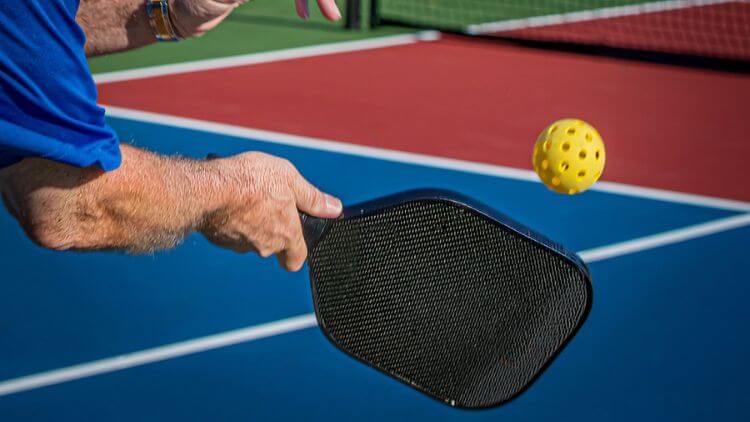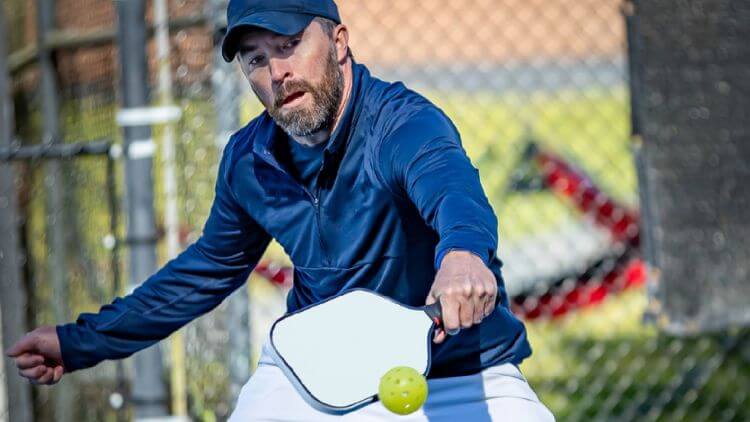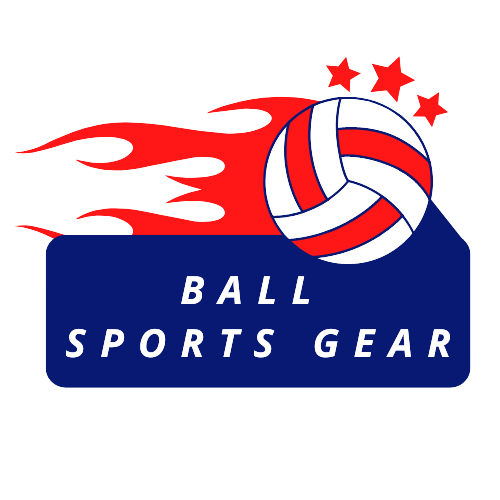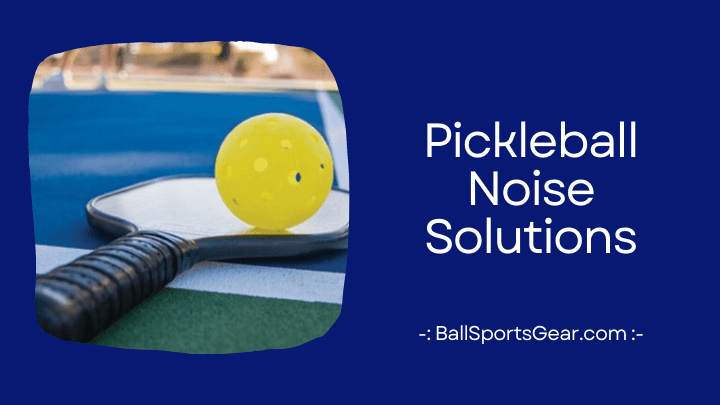In the fast-growing world of pickleball, a popular racquet sport, the issue of noise pollution has become a pressing concern. The pickleball sound generated from pickleball matches can be disruptive, especially in residential areas and shared spaces. To ensure harmony and address this problem, innovative pickleball noise solutions have emerged. These solutions aim to minimize the noise impact without compromising the excitement and competitive spirit of the game. Through careful engineering and design, players and communities can now enjoy the game of pickleball while reducing the noise disturbance.
Understanding the Causes of Pickleball Noise:
A. Characteristics of Pickleball Equipment:
One of the primary factors contributing to pickleball noise is the design and construction of the equipment used, including paddles and balls. Paddles with hard, rigid surfaces tend to produce more noise upon impact with the ball. In contrast, paddles made of softer materials or those with noise-dampening features can help reduce noise levels. Similarly, the type of ball used can affect noise generation, with harder balls producing more noise compared to softer ones. By opting for paddles and balls designed to minimize noise, players can significantly contribute to noise reduction on the court.
B. Playing Techniques and Hitting Surfaces:
Player technique plays a crucial role in the noise generated during pickleball games. Aggressive shots, such as power smashes, often result in louder impacts and more pronounced noise. Encouraging players to focus on controlled and precise shots, rather than excessive power, can help minimize noise levels. Additionally, the surface on which the game is played also influences noise. Hard court surfaces tend to produce more noise compared to softer surfaces. Consideration should be given to using court materials that minimize noise transmission, such as shock-absorbing surfaces or cushioned underlays.
C. Environmental Factors:
The surrounding environment and court construction can contribute significantly to noise levels during pickleball games. The design and construction of the court, as well as its proximity to neighboring properties, can affect the extent to which noise travels. Implementing noise-reducing measures during court construction, such as installing sound pickleball barriers or utilizing sound-absorbing materials, can help mitigate noise propagation. Furthermore, scheduling games during appropriate hours, respecting local noise regulations, and considering the community’s needs can foster harmonious relationships between players and nearby residents.
Strategies for Reducing Pickleball Noise:
Equipment Selection: Choosing Quieter Options
One of the simplest ways to mitigate pickleball noise is to select equipment designed to reduce pickleball sound levels. Traditional hard paddles tend to produce more noise when they strike the ball compared to newer composite paddles. Opting for composite paddles with a polypropylene core can significantly decrease noise without compromising gameplay. Similarly, using softer, noise-reducing pickleballs can help minimize the sound impact during matches.
Technique and Shot Selection: Emphasizing Control and Precision
Players can play a significant role in reducing pickleball noise by emphasizing control and precision in their shots. Aggressive shots, such as hard smashes, generate more noise upon impact. By focusing on softer shots and finesse techniques, players can lessen the noise without compromising the competitive nature of the game. Encouraging players to practice controlled shots and employing strategic shot selection can make a noticeable difference in noise reduction.
Court Design and Construction: Noise-Reducing Strategies
Designing and constructing pickleball courts with noise reduction in mind can have a lasting impact on noise levels. Using sound-absorbing materials, such as rubberized court surfaces or acoustic panels on surrounding fences, can help absorb and dissipate the pickleball sound energy generated during play. Additionally, selecting court locations away from residential areas and using natural pickleball barriers like trees or landscape features can further reduce noise propagation.

Community Engagement: Fostering Positive Relationships
Building positive relationships with the local community is vital for pickleball enthusiasts. Engaging with residents and local authorities can help create understanding and address concerns about noise. Organizing outreach programs, offering free clinics, or inviting community members to watch matches can help foster goodwill and demonstrate that noise reduction is a shared concern. By involving the community in discussions and finding collaborative solutions, a more harmonious coexistence can be achieved.
Scheduling Considerations: Being Mindful of Noise Regulations
When organizing pickleball activities, it’s crucial to be mindful of noise regulations and community guidelines. Ensure that games are scheduled during appropriate hours, avoiding early mornings, late evenings, or times when noise restrictions are in place. Being considerate of nearby residential areas and communicating openly with neighbors can help maintain a peaceful environment and avoid unnecessary conflicts.
Noise-Reduction Accessories: Innovative Solutions for Quieter Play
To tackle the issue of pickleball noise, manufacturers have developed innovative accessories designed specifically for noise reduction. These include noise-dampening paddles, quiet pickleballs, and court covers. Noise-dampening paddles feature built-in shock absorption technology that reduces the sound produced upon impact. Quiet pickleballs are engineered to minimize noise while maintaining the game’s essential characteristics. Court covers made from noise-absorbing materials help dampen the sound of ball bounces and paddle strikes, significantly reducing noise levels.
Education and Awareness: Promoting a Noise-Conscious Culture
Raising awareness about the impact of pickleball noise is crucial in fostering a noise-conscious culture among players and communities. Organizing informational sessions, distributing educational materials, and hosting community events can help players and residents understand the importance of noise reduction and encourage them to adopt noise-reduction practices. By creating a sense of shared responsibility, players can contribute to a more harmonious coexistence with their neighbors.
Regular Maintenance: Ensuring Optimal Noise Control
Maintaining pickleball courts regularly can contribute to noise control. Well-maintained courts with properly installed surfaces can minimize the noise generated by ball bounces. Regular inspection of the court surface, net tension, and padding can help identify and rectify any issues that may lead to increased noise levels. Additionally, ensuring proper court dimensions and installing noise-absorbing materials on surrounding fences can further reduce noise transmission beyond the court boundaries.
Noise Mitigation Policies: Establishing Guidelines for Noise Reduction
Local communities and pickleball organizations can collaborate to establish noise mitigation policies that set guidelines for noise reduction during play. These policies may include designated hours for play, noise level restrictions, and recommended equipment for noise reduction. By adopting such policies, communities can strike a balance between supporting pickleball enthusiasts and addressing the concerns of noise-affected residents.
Research and Innovation: Advancing Pickleball Noise Solutions
Continued research and innovation in pickleball noise reduction are essential for developing effective long-term solutions. Collaborations between sports equipment manufacturers, acoustical experts, and players can lead to the development of improved noise-reducing technologies. Research efforts can focus on exploring advanced materials, paddles with enhanced noise-dampening properties, and quieter court surfaces, ensuring that the sport can be enjoyed without unnecessary disturbances.
Impact of Noise of Pickleball
The impact of noise generated by pickleball matches can be significant and far-reaching. The sport’s rapid growth and the increasing number of players have led to an increase in noise levels, especially in residential areas and shared spaces. The loud and repetitive sounds of balls hitting paddles and the hard surfaces can cause disturbances and annoyance to nearby residents.

Pickleball noise is fueling. Excessive noise can disrupt sleep, concentration, and overall quality of life for those living in close proximity to pickleball courts. It can also create conflicts and tensions within communities, leading to complaints and the potential for restrictions on playing times or locations. Therefore, addressing the noise impact of pickleball is crucial to ensure harmony between players and the surrounding community.
Frequently Asked Questions
A: Common noise issues in pickleball include the sound of balls hitting paddles, the sound of balls bouncing on the court surface, and players’ footwork noises.
A: While there are no specific regulations or guidelines regarding noise in pickleball at the national level, some local communities or facilities may have their own rules or recommendations in place.
A: To reduce paddle noise, you can try using quieter paddles made from materials such as composite or graphite, as they tend to produce less noise than wooden paddles. Additionally, focusing on softer shots and using proper technique can help minimize the sound.
Conclusion
Pickleball noise solutions have provided a much-needed remedy to the challenge of excessive noise in the sport. By incorporating innovative technologies and thoughtful design, the disruptive impact of pickleball matches on nearby residents and shared spaces can be significantly reduced. These pickleball noise solutions allow players to continue enjoying the game while fostering a peaceful coexistence with the surrounding community. As the sport continues to grow, it is crucial to prioritize noise reduction measures to ensure that pickleball can be played harmoniously and enjoyed by all.

